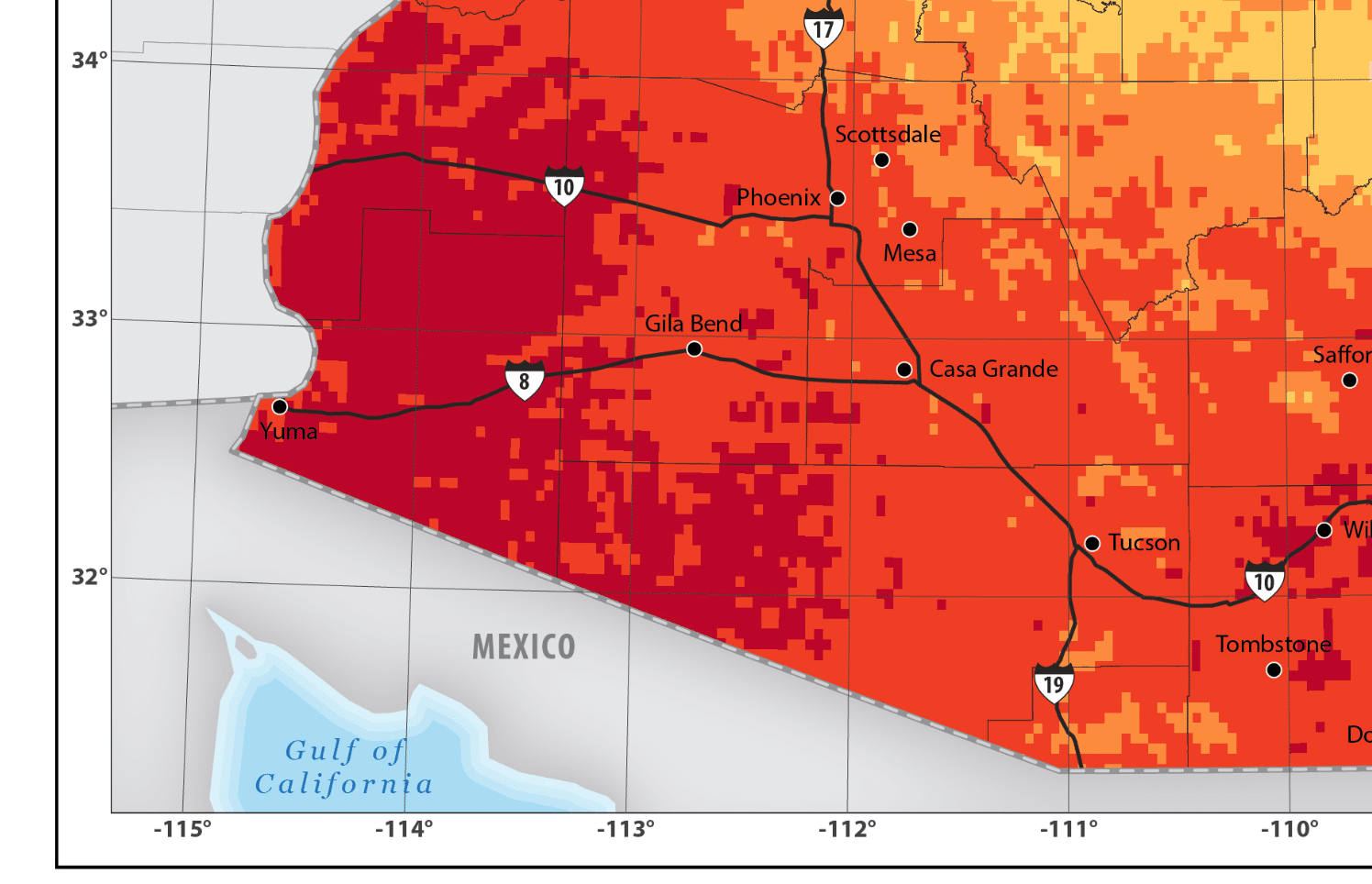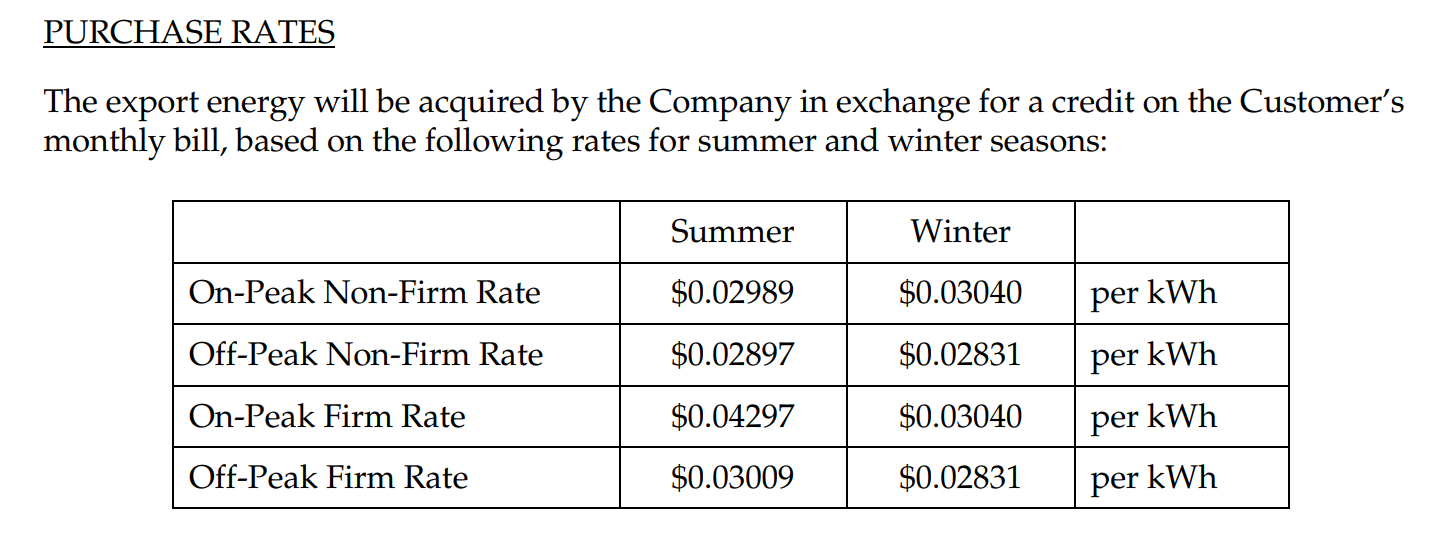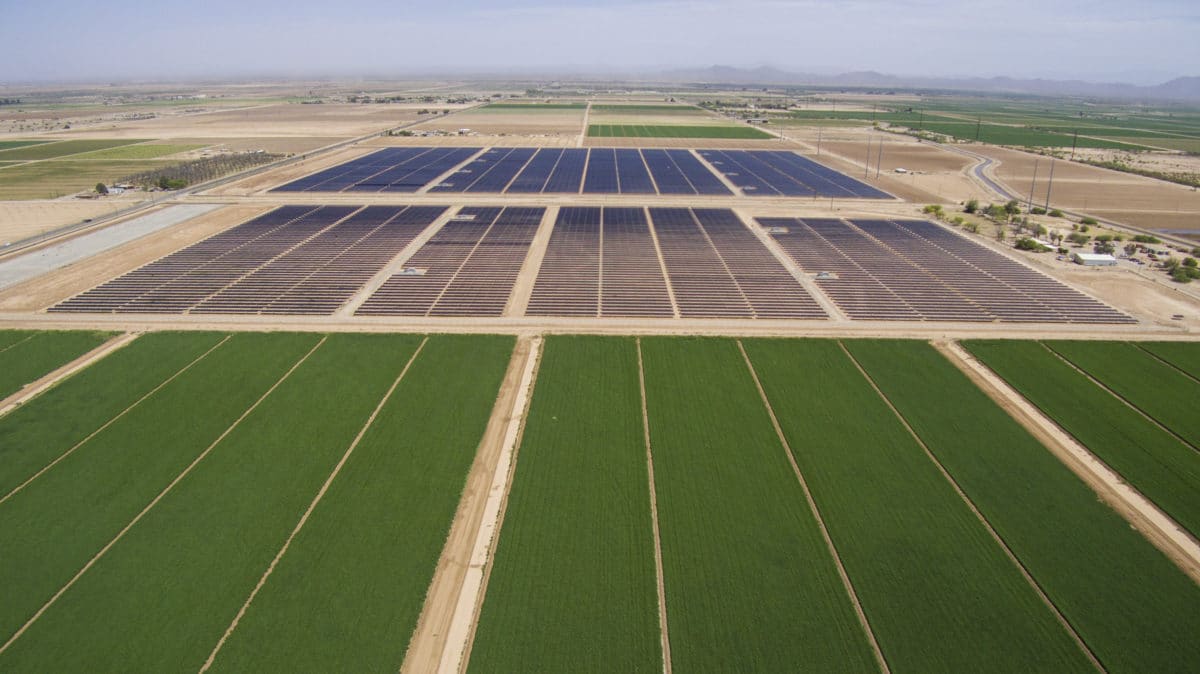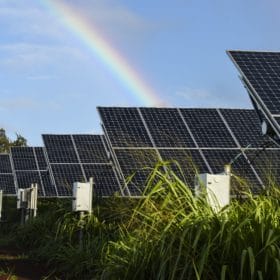If you Google Yuma, Arizona you’ll find references to the city being among the sunniest in the world. Looking at the solar insolation map from the National Renewable Energy Lab, you’ll note that the whole state gets solid solar resources – with the southwestern area having the highest values on the legend. The state has a history of dirty energy politics, including FBI investigations and near Supreme Court Cases. Nonetheless, as of the middle of the year, Arizona got the third most of any state of its electricity from solar power at 9.6% overall and has some of the cheapest solar electricity in the country.

The Arizona Corporation Commission (ACC) voted to reject a request from the state’s investor-owned utilities to set two-year contract terms for renewable energy projects under the federal Public Utility Regulatory Policies Act (PURPA), and in fact created – for the first time – a standard contract term of 18 years. The original 2016 filing leaned heavily on an Idaho ruling requesting a 2 year PURPA contract.
The ruling noted specifically, that:
Arizona Public Service Electric (APS) will provide QFs with a contract term of no less than eighteen (18) years, applicable to a QF (qualifying facility) with nameplate capacity over 100 kw; The rate paid to the QF will be established using APS’s long-term avoided cost. APS shall use the long-term avoided cost methodology established by the Commission.
In April, local reporter Tuscon Electric Power models solar qualifying facilities rate ranging from about 2.1 to 2.5¢/kWh, depending on the type of installation and season. In a filing on the same day as the PURPA vote related to residential solar net metering, Arizona utility Trico Electric Cooperative requested avoided rates be increased from 2.737¢/kWh to 3.019¢/kwh based on changes in pricing over the course of 2018. APS notes their avoided costs in the below image in a document describing 100 kW or less sized systems.

Court Rich, Senior Partner (and what else could his destiny be with such a fine first name?) at the Rose Law Group, noted on its website that developers with 420 megawatts of solar projects were complaining of getting contracts with absurdly lower rates and two year contracts in the run up to this decision. Court suggested via Twitter that the “ACC decision on PURPA will bring hundreds of MWs of solar, thousands of jobs, and millions in tax revenues to AZ.” EIA data suggests that North Carolina became a leading utility scale solar power state because of PURPA projects.
Court confirmed to pv magazine USA that before this ruling there was in fact no set time for PURPA contracts within the state.
In April, a prior push to gain a ruling on the case and a 15-year term on PURPA contracts ended with a failed vote. In his testimony at the time, Commissioner Tobin, claimed that a rejecting vote would cause the state to miss out on $600 million worth of potential PURPA-based projects. Tobin also noted, “the Commission could find that the intent of the 1981 PURPA Policy requires 15-year contract terms, but also find that contract terms for TEP of 5 years, for UNS of 2 years, and for APS of 10 years are reasonable exceptions to the 1981 Policy”.
This content is protected by copyright and may not be reused. If you want to cooperate with us and would like to reuse some of our content, please contact: editors@pv-magazine.com.









I read about this last week. APS was saying that they didn’t want to be “stuck” in a long term contract. Funny how utilities never feel that way about 30-50 year deals for FF.
BTW, 2.1 to 2.1¢/kWh seems like a very narrow range.
APS ran a ‘counter’ add campaign when Tom Steyer’s group tried to create the 50% by 2030 intitative that would have changed Arizona’s REC. It failed at the voting booth, (but) the people of Arizona voted in at least a couple of ACC commissioners that have since proposed 50% by 2028. APS at the time ran adds that said, the “amount and cost” of infrastructure needed would cost the ‘average’ ratepayer up to $83 a month more per electric bill. the ACC asked APS about this and the answer never seemed to materialize before the vote. Now I’m guessing APS will have to file rate cases with the ACC to increase electricity rates to install more alternative energy generation, for one, to replace the now shutdown NGS coal fired power plant in Northern Arizona, but add additional generation facilities for a growing Phoenix and Tucson population base.
The (right) thing to do is for APS, SRP, TEV to go out to competitive bid and accept bids that have solar PV or wind generation with energy storage as part of the project. In this way the additional energy storage can be used as a revenue stacking asset when it is used for arbitrage, generation day to night demand shifting, power “shuttling”, frequency regulation, voltage regulation, peak demand ancillary services. With just one asset, the power company would ‘like’ to have this ‘stacked’ revenue resource online instead of a fueled generation facility that gets perhaps only 5% use each year.
North Carolina has a history of dirty energy politics. The corruption with the many middlemen electric cooperatives and the large producers that also sell directly to consumers is very disappointing.